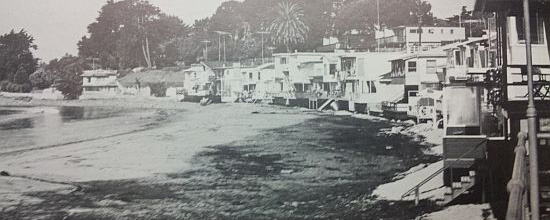
Santa Barbara Oil Spill: From 1969 to 2015
by the Dedicated Staff of edhat.com
reprinted from EdHat. May 23, 2015
The oil spill at Refugio is making local Santa Barbara County residents shudder with thoughts of the devastating spill in 1969.
On January 29, 1969, the largest oil spill to have occurred off the California coast began in Santa Barbara County. A Union Oil Co. platform stationed six miles off the coast of Summerland suffered a rupture. Oil workers had drilled a well down 3500 feet below the ocean floor and after a series of attempts, for eleven days the oil workers struggled to cap the rupture.
200,000 gallons of oil surfaced and with the wind it spread into a 800 square mile. Due the tides, 35 miles of coastline from Rincon to Goleta were covered in tar. The Channel Islands were also affected as the oil slick moved further south. Seals, dolphins, and seabirds were the most affected as they continued to wash ashore. 3,686 birds were estimated to have died because of contact with oil.
After the Santa Barbara oil spill, Earth Day gained national attention and local Bud Bottoms founded GOO (Get Oil Out) which urged people to boycott gas stations and petition to ban offshore drilling. The environmental movement picked up significantly after the attention this oil spill received. Perhaps one of the most controversial comments came from Fred L. Hartley, president of the Union Oil Company who said, “I don’t like to call it a disaster,” [because there has been no loss of human life]. “I am amazed at the publicity for the loss of a few birds.”
Earlier this week, when the news broke of another oil spill off our beautiful coast, the hearts of locals sank. “Not again,” “Ban drilling,” and “Why?” are versions of the comments filling up the edhat boards. Some people wonder how this could happen with the technology available 46 years later. Plains All American Pipeline is responsible for the spill and several media outlets are reporting discrepancies with their past and current response to the spill.
The most recent numbers state that potentially 105,000 gallons of crude oil spilled from the pipeline while the latest clean up effort approximates 9,492 gallons of oily water were recovered. As far as the effect on marine life, 3 pelicans, 2 sea lions, 1 dolphin, and more than 50 invertebrates have died, most likely caused by the spill although not yet confirmed.
The issue of renewable energy is once again brought to light as local activists and politicians speak out. Activist Paul Relis, who helped start the grassroots environmental movement with the Community Environmental Council after the 1969 oil spill, spoke out about the recent spill compared to the last.
“[…] one major difference is that 45 years ago, we had no idea how to break our addiction to oil. Now we do. Now we have both the policy tools and the technology to make this transition. Those are two powerful drivers.
California is without question a global leader when it comes to renewable energy, and state energy policies are moving us even further in that direction. Remember, the Governor announced in January that he is directing the state to reduce petroleum demand by 50% by 2030. That’s huge.
We are at a pivotal moment in history, and the Refugio Oil Spill is a grim reminder of the necessity of moving renewable energy to the forefront.”
In a public forum on local energy issues hosted just two days after the recent spill, local community leaders discussed energy choices. “The oil spill should be a visceral reminder that we need to move faster on our local energy transition. If this doesn’t get our feet moving I don’t know what will.” said SB City Councilmember Gregg Hart.
“We face a risk by relying on the grid. It has to work and it has to work well. Santa Barbara should be the leader that other communities can emulate on local energy.” said Maggie Campbell, Executive Director of Downtown Organization.
Response crews continue to investigate and clean the areas where oil was released from the damaged pipeline. The Unified Command continues to inform the public as the Federal Government and journalists continue to investigate the company responsible.


![Santa Barbara Museum of Natural History Board of Directors. Photo By Jllm06 (Own work) [CC BY-SA 3.0 (http://creativecommons.org/licenses/by-sa/3.0)], via Wikimedia Commons](https://paulrelis.com/wp-content/uploads/2016/01/Santa_Barbara_Museum_of_Natural_History_-_exterior-200x200.jpg)


Comments (0)